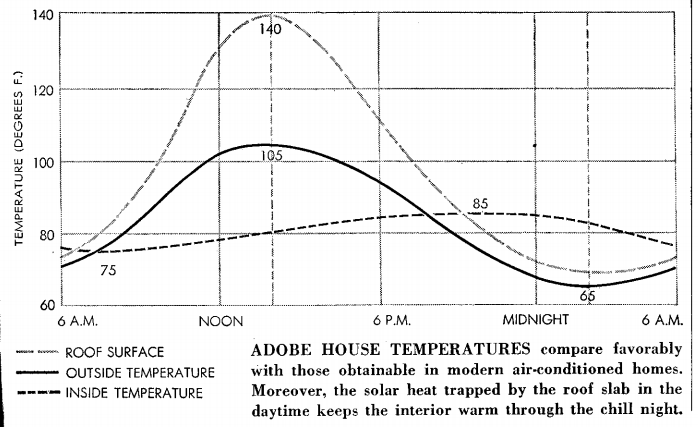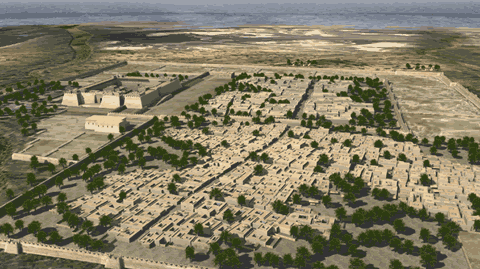
Gus Willard Van Beek (1920-2012, Dept. Anthropology, National Museum of Natural History, Smithsonian Institution) on the thermal properties of traditional earth and mud homes, citing a 1970s experiment in Iran. Stellar result from the "free dug at site material". 



A preliminary understanding of how soil and earth works as a building material can be easily tested digging a hole and measuring the temperature therein. (Photo of the authors at a site in Egypt.) 



In the late 1950s James Marston Fitch and Daniel P. Branch measured temperatures in traditional adobe homes in the U.S. Southwest. You really do not need air conditioning in a house built like this: the interior temperature is stable. (Example of a traditional home to the right.) 



Back to the Van Beeks, who visited the traditional beehive homes in Fah (a village near Aleppo), in Syria, where they found the new concrete homes of the villagers very cold even in April and apparently unusable in the summer heat. 







• • •
Missing some Tweet in this thread? You can try to
force a refresh

























